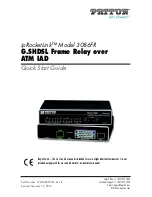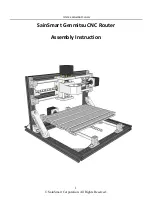
1-6
MAX 3000 Installation and Basic Configuration Guide
Getting Acquainted with the MAX
Interfaces
Interfaces
The MAX has a number of interfaces on the base unit, and others are available on expansion
cards.
Interfaces on the base unit
The MAX base unit’s physical interfaces are on the back panel, as shown in Figure 1-1 on page
1-2 through Figure 1-3 on page 1-3.
Power interface
The MAX accepts ac power. Figure 1-1 on page 1-2 show ac power sockets. (For further
details, see Appendix D, “Safety-Related Electrical, Physical, and Environmental
Information.”)
Control port
The Control port connects to a VT100 terminal or a modem to provide the menu-driven user
interface to the MAX. The interface runs at 9600 bps (configurable through the user interface),
8 bits per character, no parity, no flow control, and 1 stop bit. (For details about cables that
connect to this port, see “User interface specifications” on page C-1.)
Serial WAN port
The Serial WAN port provides a point-to-point connection between the MAX and another
device. You can use either the leased T1 port or the Serial WAN port for this purpose, but not
both. (For details about cables that connect to the serial port, see “Serial WAN cabling
specifications” on page C-38.)
LAN UTP port
The LAN UTP port connects the MAX to an unshielded twisted pair 10/100 BaseT (UTP)
LAN. (For details about cables that connect to this port, see “Ethernet interface specifications”
on page C-4.)
WAN ports
The MAX has six WAN ports, numbered 1 through 6. Depending on the MAX 3000 model, the
ports are used as described in the following subsections. (For details about cables that connect
to the WAN ports, see “T1/PRI interface specifications” on page C-5 and “E1/PRI interface
specifications” on page C-13.)
MAX 3000 BRI
WAN ports 1 through 6 are configured as BRI interfaces. They can be either U-interface or
S-interface type.
















































